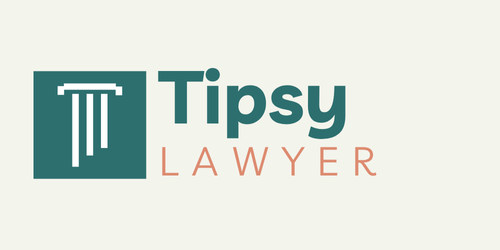A 90-day probationary period is a standard practice in many organizations, serving several crucial functions. It allows employers to assess new employees’ performance, work habits, and organizational fit. This period enables both parties to evaluate whether the role suits the individual and the company.
New employees can adapt to the company culture, understand their responsibilities, and showcase their abilities during this time. Employers use this period to provide necessary training and support to help new hires succeed in their roles. The probationary period also acts as a safeguard for employers, offering an opportunity to address performance issues before making long-term commitments.
Furthermore, a 90-day probationary period can help reduce turnover and hiring costs. By thoroughly evaluating new employees during this time, employers can make informed decisions about retention or termination before investing significant resources into long-term employment. Understanding the purpose of a 90-day probationary period is crucial for both employers and employees to establish clear expectations and goals for the initial employment phase.
Key Takeaways
- The purpose of a 90-day probationary period is to assess an employee’s performance, fit, and potential for long-term success within the organization.
- A clear and comprehensive policy should outline the expectations, evaluation criteria, and potential outcomes of the probationary period.
- Communicating the policy to employees is crucial for setting clear expectations and ensuring transparency throughout the probationary period.
- Providing training and support during the probationary period can help employees succeed and meet performance expectations.
- Monitoring and evaluating employee performance regularly allows for timely feedback and assessment of progress during the probationary period.
- Addressing performance issues and providing feedback is essential for guiding employees towards improvement and success.
- Making informed decisions at the end of the probationary period requires a thorough evaluation of the employee’s performance and potential for long-term success within the organization.
Creating a Clear and Comprehensive Policy
Establishing Expectations and Guidelines
A well-defined policy for the 90-day probationary period is essential for setting clear expectations and guidelines for both employers and employees. This policy should outline the purpose of the probationary period, the expected standards of performance and behavior, and the process for evaluation and feedback. Additionally, it should provide information about any training or support that will be offered during this period.
Consequences of Not Meeting Expectations
The policy should clearly state the consequences of not meeting performance expectations, including the possibility of termination. It is crucial to ensure that the policy complies with all relevant employment laws and regulations, which may involve consulting with legal counsel or HR professionals to guarantee that the policy is fair, non-discriminatory, and compliant with all applicable laws.
Effective Communication and Implementation
The policy should be clearly communicated to all employees, providing them with an opportunity to ask questions or seek clarification about any aspects of the policy. By creating a clear and comprehensive policy for the 90-day probationary period, employers can establish a strong foundation for evaluating new employees and managing their performance during this critical period.
Communicating the Policy to Employees

Communicating the policy for the 90-day probationary period to employees is essential for setting clear expectations and ensuring that everyone understands their roles and responsibilities during this period. Employers should provide all new employees with a copy of the policy as part of their onboarding process, and they should take the time to review it with them to ensure that they understand its contents. It’s also important to provide opportunities for employees to ask questions or seek clarification about any aspects of the policy.
In addition to providing a written copy of the policy, employers may also consider holding a meeting or training session to discuss the probationary period in more detail. This can help to ensure that all employees have a clear understanding of what is expected of them during this period and what support they can expect from the organization. Employers should also be open to feedback from employees about the policy and be willing to make adjustments if necessary to ensure that it is fair and effective for all parties involved.
By effectively communicating the policy to employees, employers can help to set a positive tone for the probationary period and create a supportive environment for new employees as they acclimate to their roles.
Providing Training and Support During the Probationary Period
| Training and Support Metrics | Probationary Period |
|---|---|
| Number of training sessions provided | 10 |
| Percentage of probationary employees receiving support | 90% |
| Average satisfaction rating for training | 4.5 out of 5 |
| Retention rate of probationary employees | 80% |
Providing training and support during the 90-day probationary period is essential for helping new employees succeed in their roles and meet performance expectations. This may include providing on-the-job training, mentorship, access to resources and materials, and regular check-ins with supervisors or mentors. Employers should take the time to assess each new employee’s needs and provide tailored support to help them acclimate to their role and perform at their best.
In addition to job-specific training, employers should also provide information about company policies, procedures, and culture to help new employees integrate into the organization. This may include providing access to employee handbooks, training materials, and opportunities for networking and relationship-building within the organization. By providing comprehensive training and support during the probationary period, employers can help new employees feel valued and supported as they navigate their new roles.
Monitoring and Evaluating Employee Performance
Monitoring and evaluating employee performance during the 90-day probationary period is essential for assessing whether new employees are meeting performance expectations and acclimating to their roles within the organization. This may include setting clear performance goals and expectations at the beginning of the probationary period and regularly assessing progress towards these goals. Employers should provide regular feedback to new employees about their performance, highlighting areas of strength and identifying areas for improvement.
In addition to regular feedback, employers may also consider conducting formal performance evaluations at specific intervals during the probationary period. This can provide an opportunity for both employers and employees to discuss progress, address any concerns or challenges, and set goals for the remainder of the probationary period. By monitoring and evaluating employee performance throughout the probationary period, employers can make more informed decisions about whether to retain or terminate an employee at the end of this period.
Addressing Performance Issues and Providing Feedback

Identifying and Addressing Performance Concerns
Addressing performance issues and providing feedback during the 90-day probationary period is essential for helping new employees succeed in their roles and meet performance expectations. If an employer identifies any performance issues or concerns during this period, they should address them promptly with the employee and provide clear feedback about what needs to improve. This may include setting specific goals for improvement, providing additional training or support, or adjusting expectations as needed.
Approaching Performance Issues with Empathy
It’s important for employers to approach performance issues with empathy and understanding, recognizing that new employees may need time to acclimate to their roles and may benefit from additional support or guidance. Employers should also be open to feedback from employees about their experiences during the probationary period and be willing to make adjustments as needed to support their success.
Supporting Employee Success
By addressing performance issues promptly and providing constructive feedback, employers can help new employees overcome challenges and succeed in their roles. This proactive approach not only benefits the employee but also the organization as a whole, as it leads to improved job performance, increased employee satisfaction, and reduced turnover rates.
Making Informed Decisions at the End of the Probationary Period
Making informed decisions at the end of the 90-day probationary period is essential for both employers and employees. Employers should carefully evaluate each new employee’s performance, work habits, and overall fit within the organization before making a decision about whether to retain or terminate them. This may include reviewing performance evaluations, feedback from supervisors and colleagues, and any documented instances of performance issues or concerns.
Employers should also take into consideration any improvements or progress that new employees have made during this period, as well as any extenuating circumstances that may have impacted their performance. It’s important for employers to approach this decision with fairness and objectivity, ensuring that they have thoroughly assessed all relevant factors before making a final decision. By making informed decisions at the end of the probationary period, employers can set a strong foundation for long-term success with their new employees while also providing closure for those who may not be the right fit for the organization.
If you’re interested in learning more about employment law and probationary periods, check out this article on tipsylawyer.com. It provides valuable information on the legal aspects of probationary periods and how they can impact both employers and employees.
FAQs
What is a 90 day probationary period policy?
A 90 day probationary period policy is a period of time during which an employee’s performance and suitability for a job are evaluated. It is typically the first three months of employment and allows the employer to assess the employee’s capabilities before making a final decision on their permanent employment status.
What is the purpose of a 90 day probationary period policy?
The purpose of a 90 day probationary period policy is to give both the employer and the employee an opportunity to assess each other and determine if the job is a good fit. It allows the employer to evaluate the employee’s performance, work ethic, and overall suitability for the role, while also giving the employee a chance to assess the company culture and job responsibilities.
What happens at the end of a 90 day probationary period?
At the end of the 90 day probationary period, the employer will typically conduct a performance review to assess the employee’s performance and suitability for the role. Depending on the outcome of the review, the employee may be offered permanent employment, extended probation, or terminated from the position.
Is a 90 day probationary period policy legal?
Yes, a 90 day probationary period policy is legal in many jurisdictions, as long as it complies with employment laws and regulations. It is important for employers to clearly communicate the terms of the probationary period to employees and to adhere to any applicable employment laws.
What should be included in a 90 day probationary period policy?
A 90 day probationary period policy should outline the expectations for the employee during the probationary period, including performance standards, job responsibilities, and evaluation criteria. It should also specify the process for performance reviews and the potential outcomes at the end of the probationary period.














